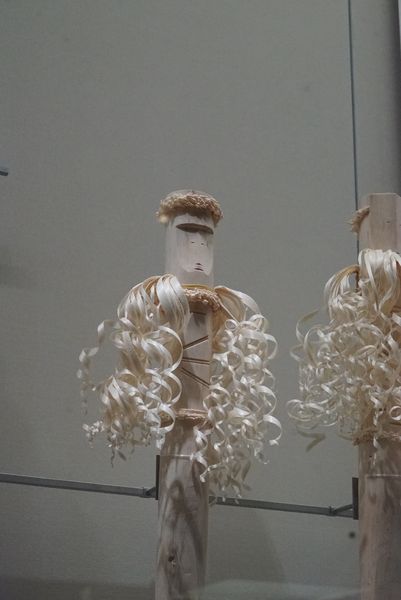Research: Ainu Traditional Crafts and Textiles¶
"If our goal is to make things in a manner that is less destructive to the planet...perhaps a good place to start is to look to those who were able to do this successfully."
Learning from Experts¶
In January, I took a trip to Japan's northern island of Hokkaido to visit the Upopoy Ainu National Museum to conduct research on the traditional craft techniques of Japan's indigenous Ainu people.
I learned a TON about the Ainu people from the various exhibits at this large amd beautiful museum park. I spent 3hrs there and could have spent another 3hrs conducting more research and participating in hands-on workshops they offerred. A highly recommended museum for those interested in traditional crafts.

I chose to conduct research on the Ainu people because of the comprehensive culture this indigenous group of people posess. Isolated mostly to the northern island of Hokkaido, the Ainu culture developed in a mostly uncorrupted manner. Their way of life is grounded on a holistic, "religious" view regarding peaceful and respectful existance among nature.

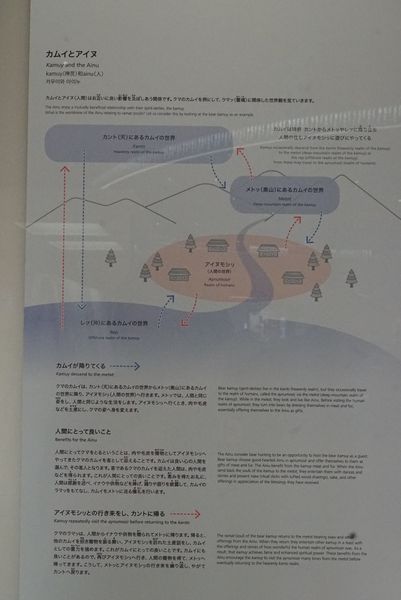
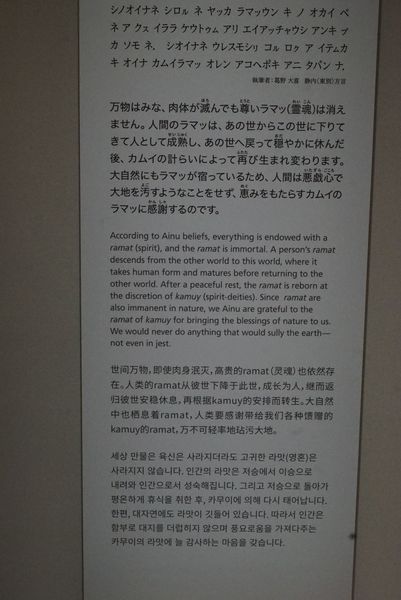
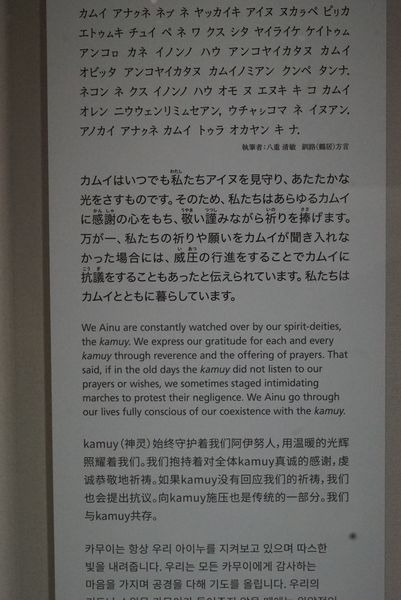
The Ainu people's culture and rituals bear a striking similarity to those of Native Americans who also coexisted with nature in a respectful and symbiotic manner.
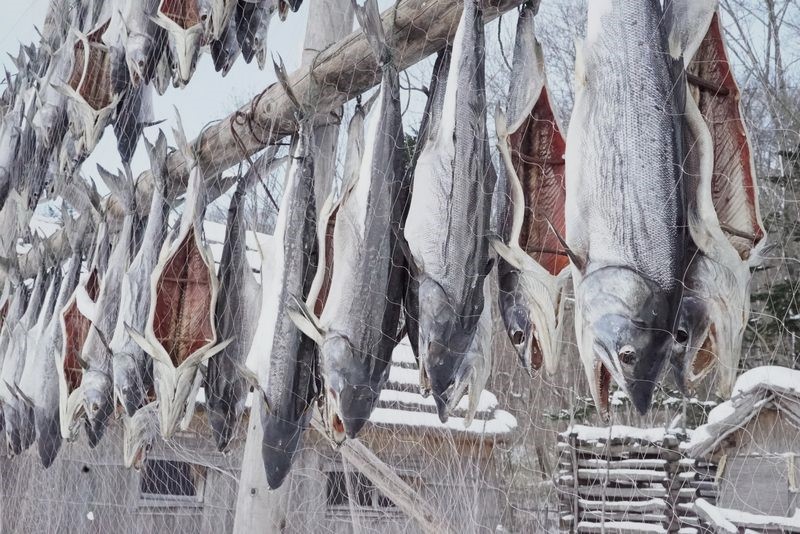
Ainu Museum Photos¶
Found Materials > making good use of what is discovered in the immediate environment. Waste nothing. Make modest materials precious. Use materials in creative ways...
- make shoes out of fish
- make a cloak out of bark
- make a roof out of reeds
My greatest understanding from my research trip is that the Ainu people are immensely creative...finding tools and materials in a scarce environment...are exceptionally poetic in their transformation of humble materials...are humble and respectful in their relationship with nature and its non-human beings.
Ainu Crafts¶
Furnishings: Reed Mat Weaving
The stone loom used to weave the reed mats I found simple, elegant...and clearly effective. An object lesson...perhaps fancy tools are not necessary to make beautiful things.
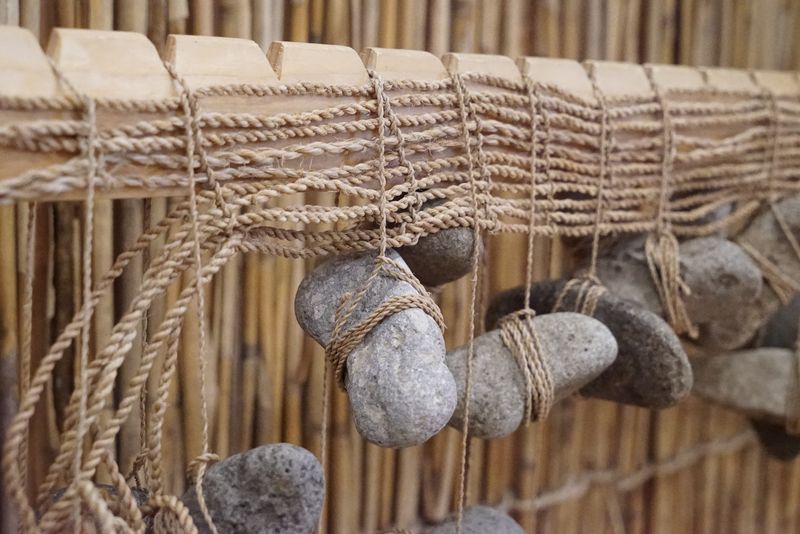
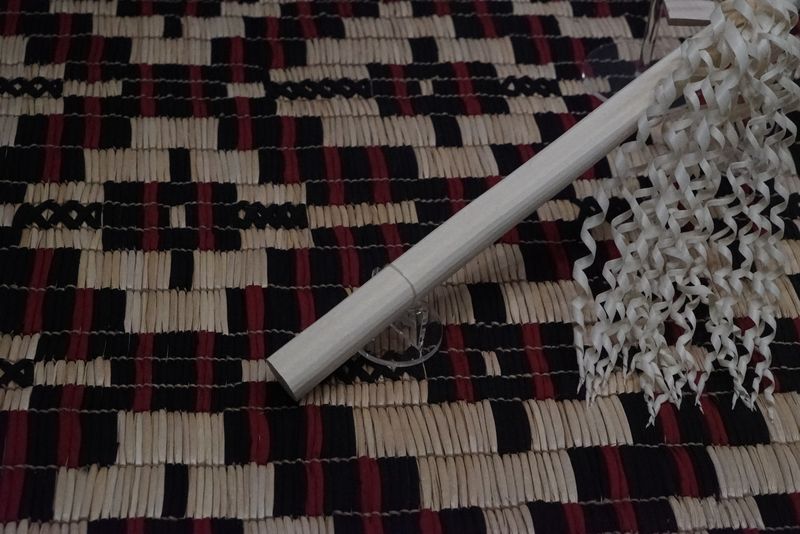
Architectural Application: Straw used as roofing and siding material
The same technique used in making the straw raincoats are applied to make weather protection for living spaces. Modular layers of reed/straw are used to generate a barrier against the elements. All-natural, inexpensive, easy to repair, easy to maintain...while effective and robust.
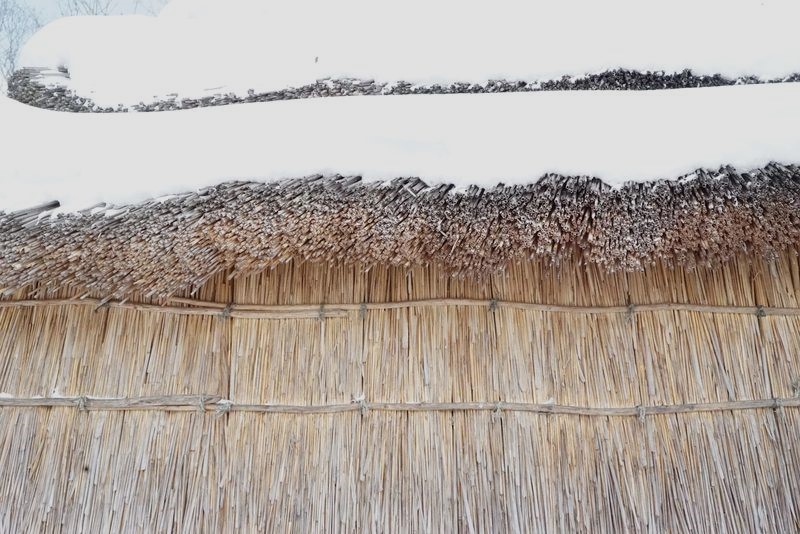
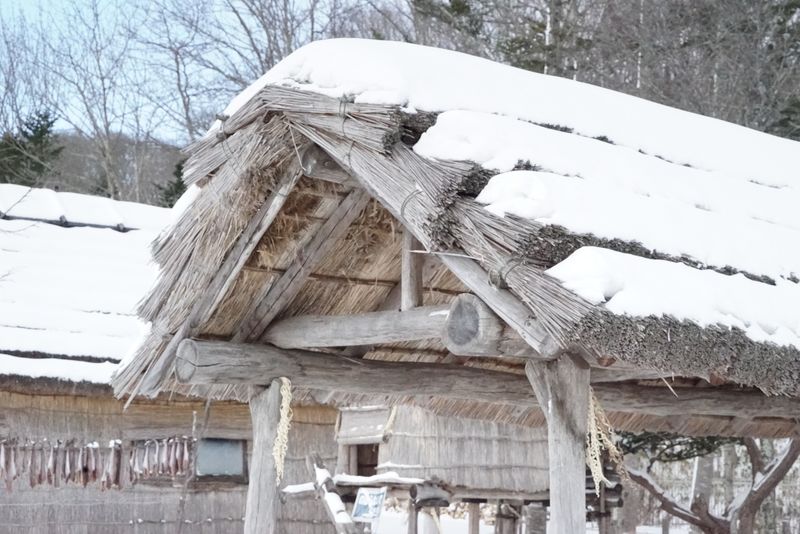




Wearables: Fish Skin Leather Shoes
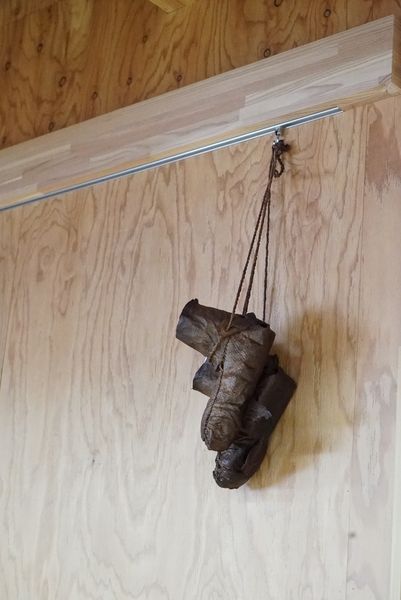
- Note that the fins are left on and located at the bottom of the sole..."to provide traction in the snow and ice".
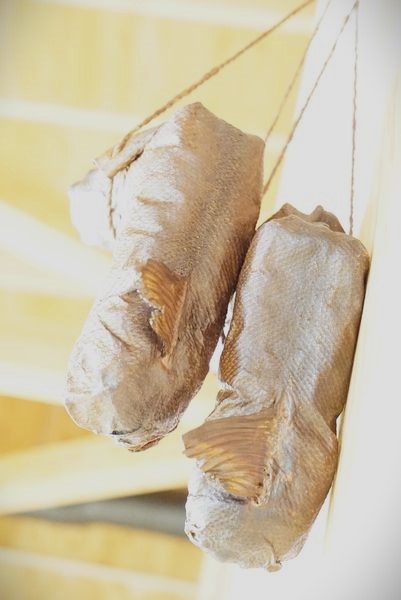
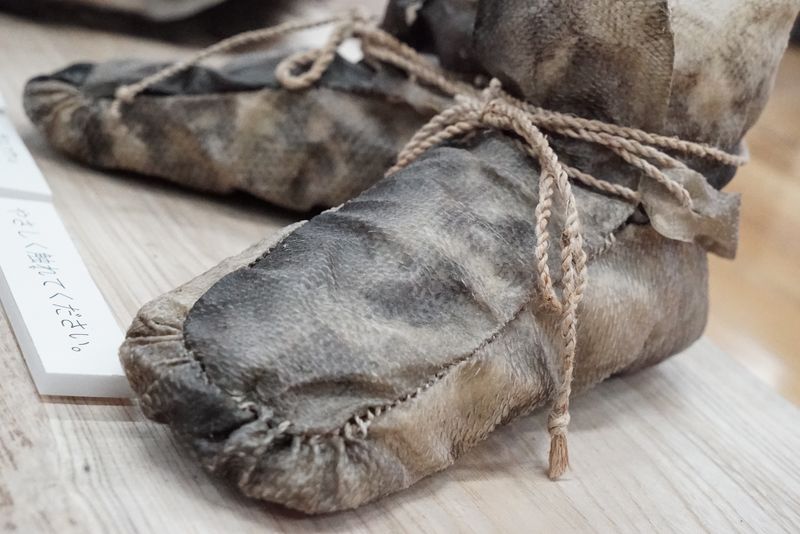
Nibutani Bark Cloth...trees from the Saru River basin
 ...hand woven fabric via a simple loom
...hand woven fabric via a simple loom


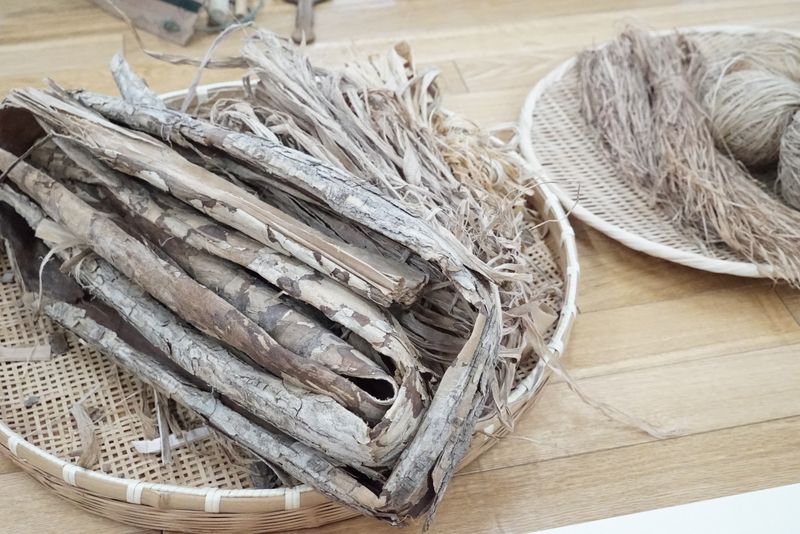
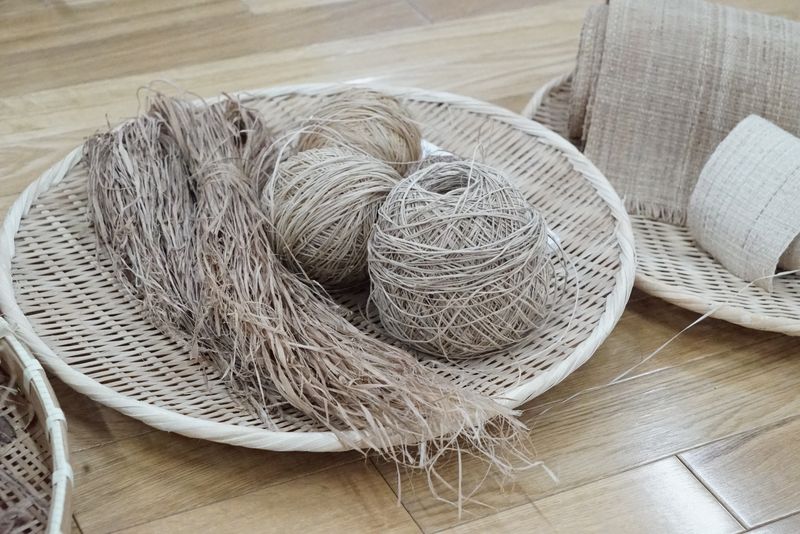


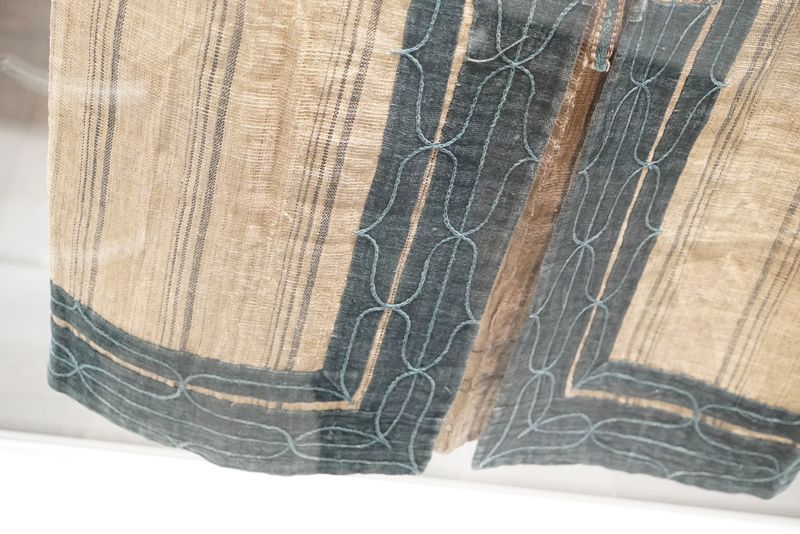
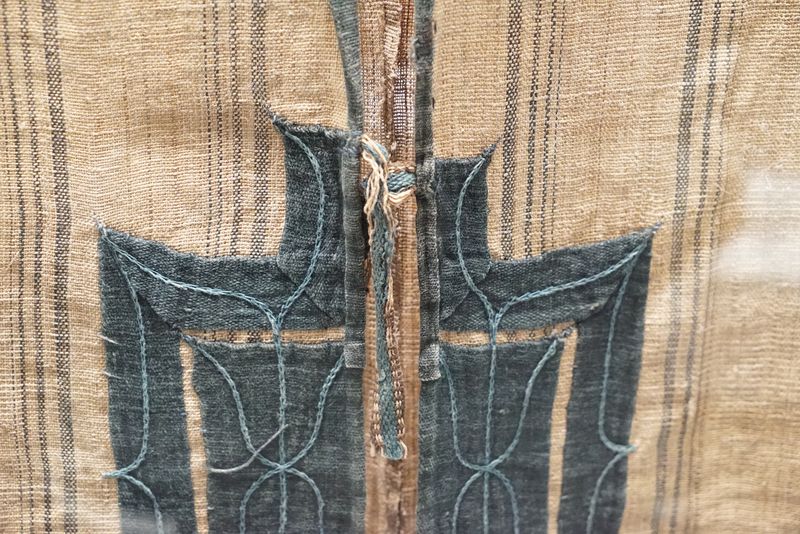
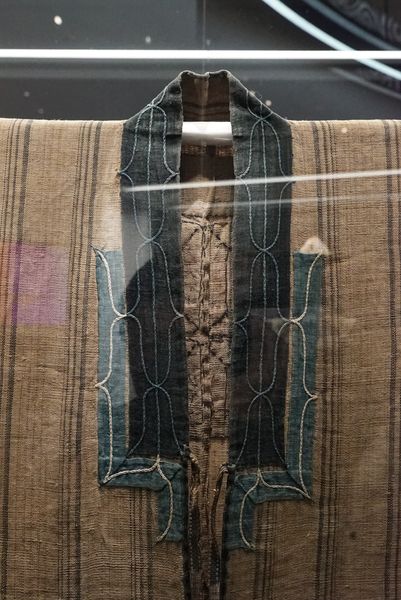

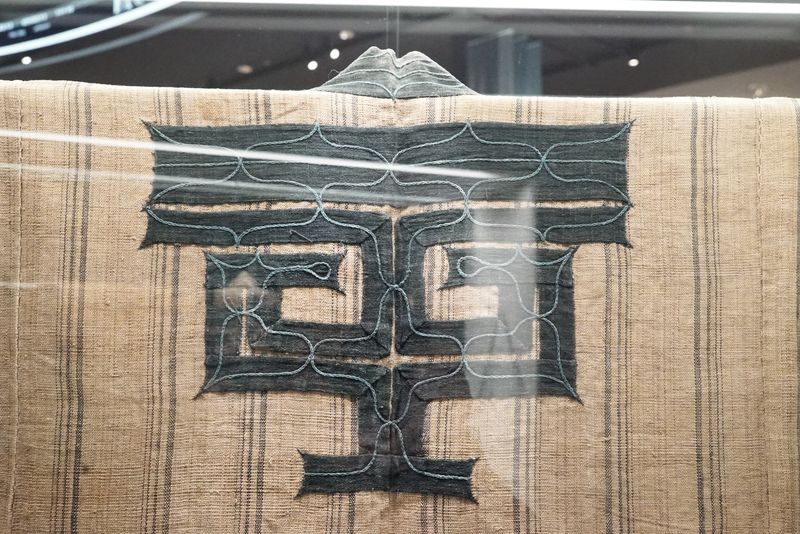
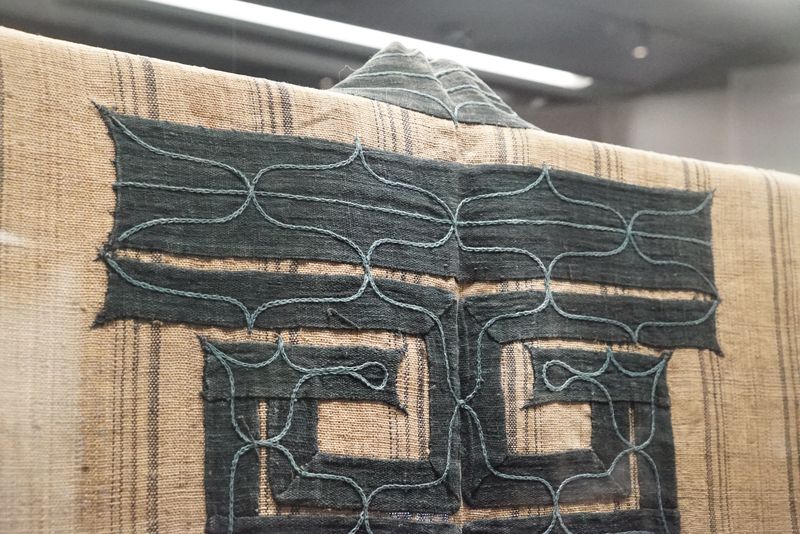
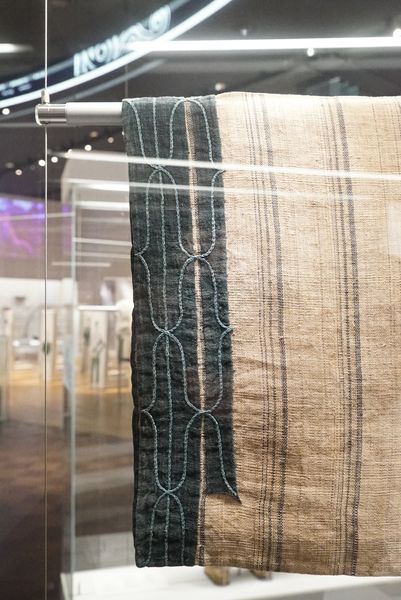
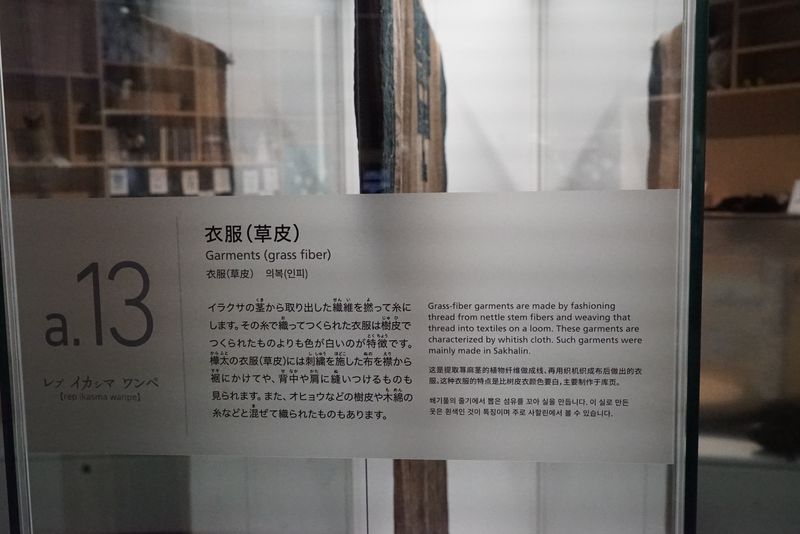
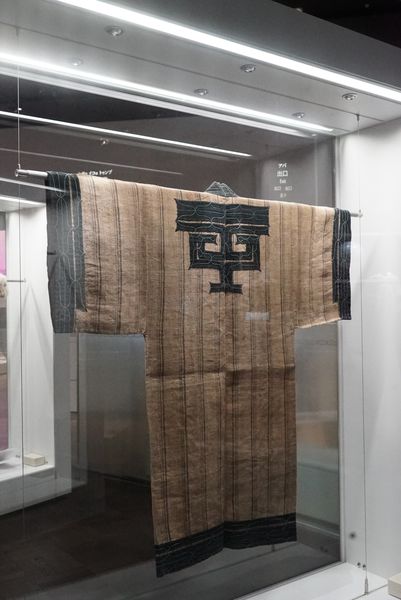
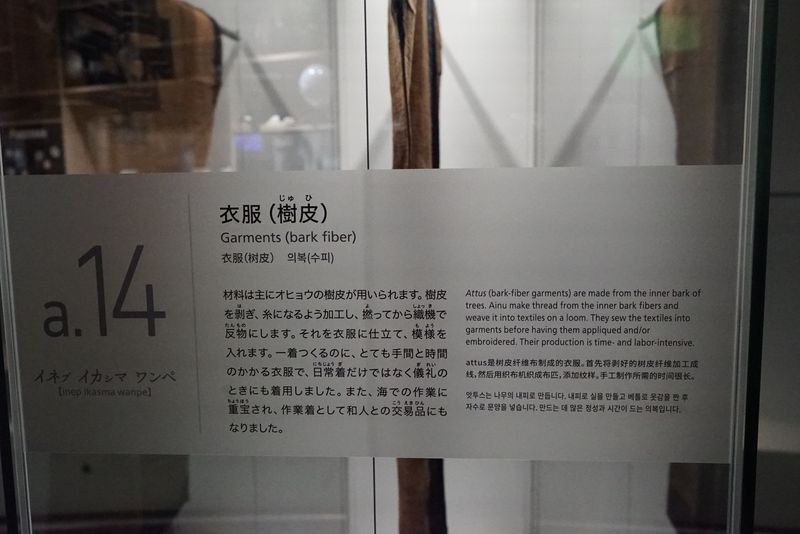

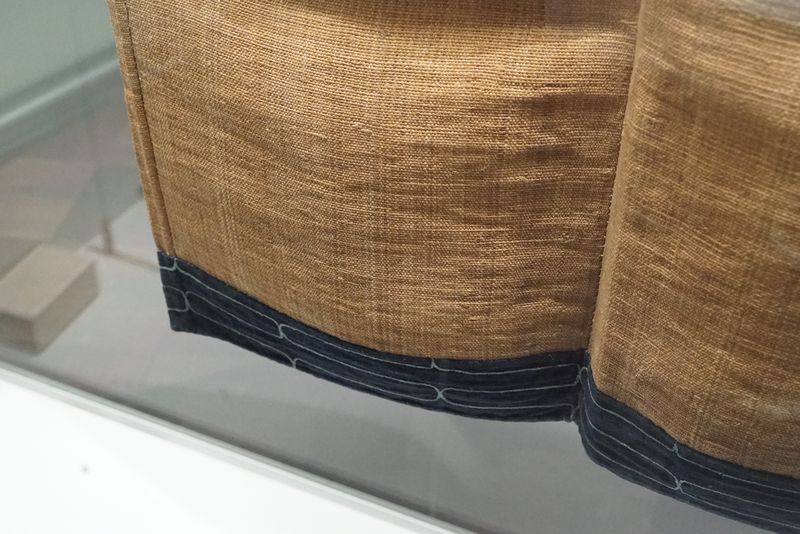


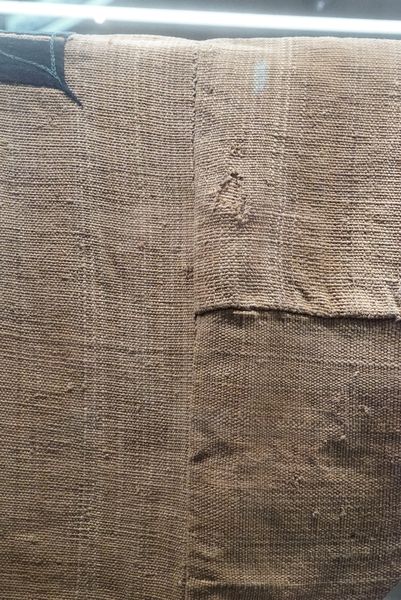
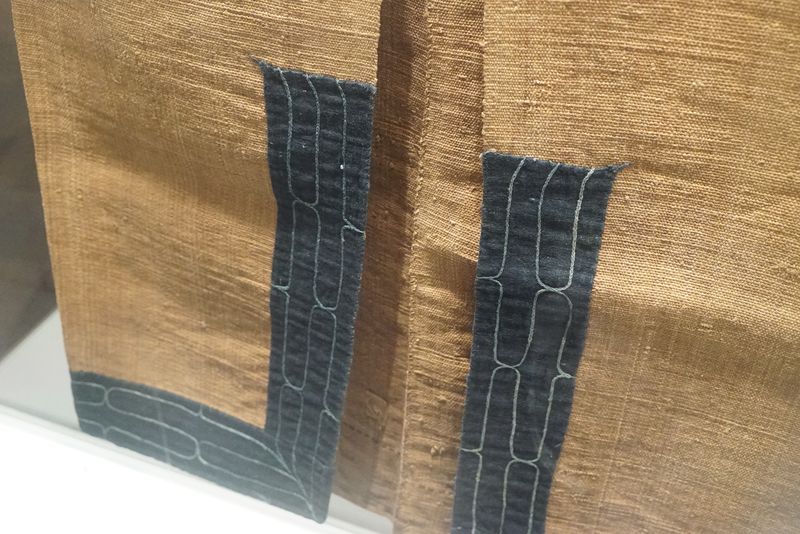
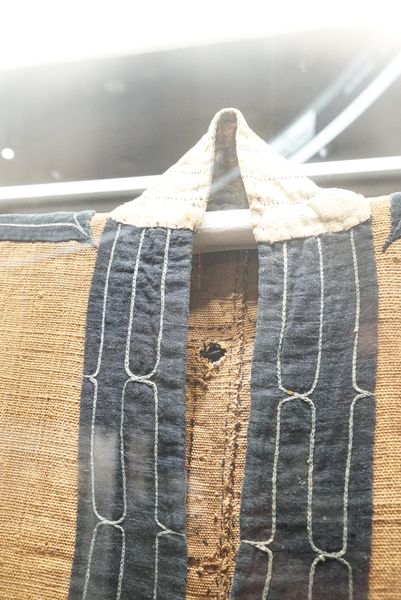
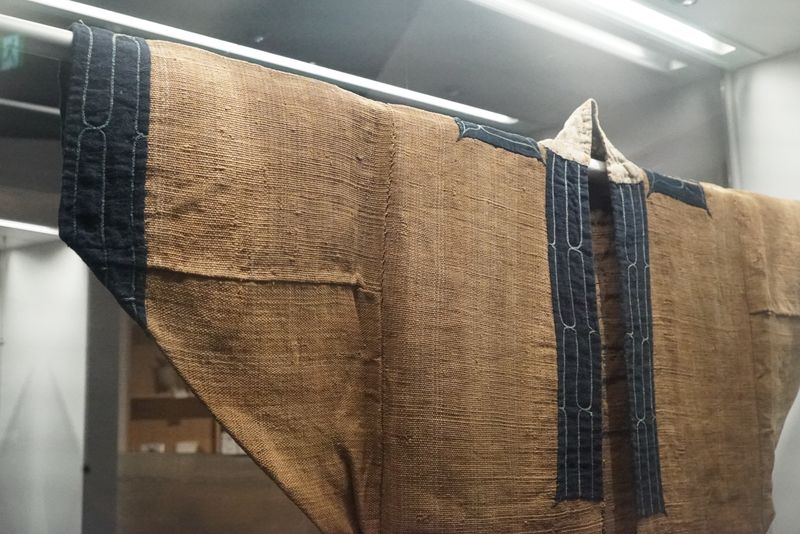
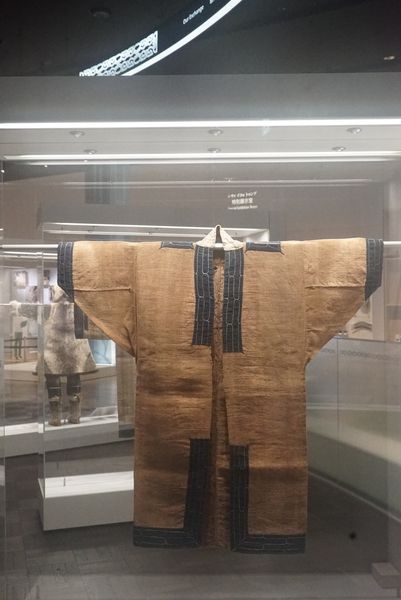
Ainu Kimono Patterns: coded with meaning

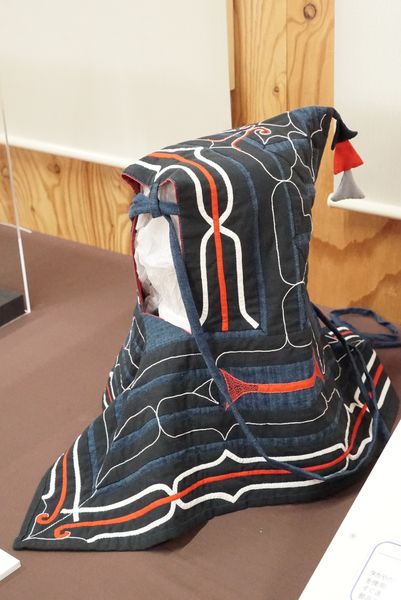
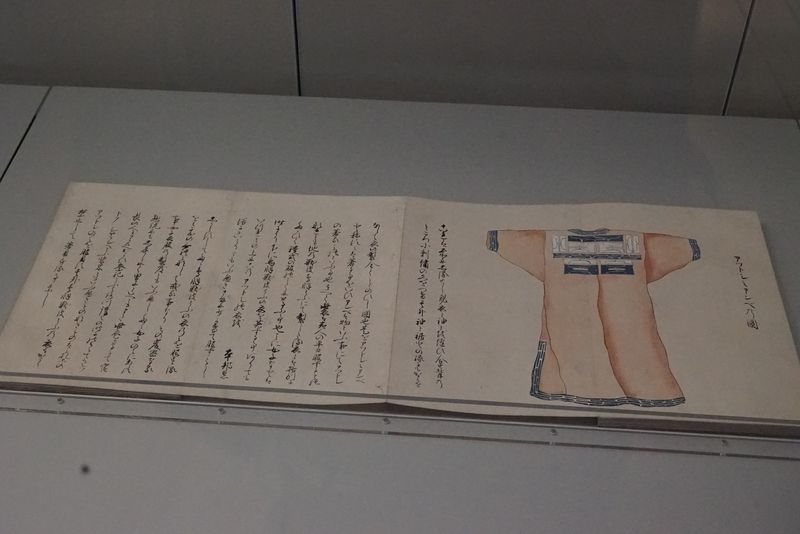
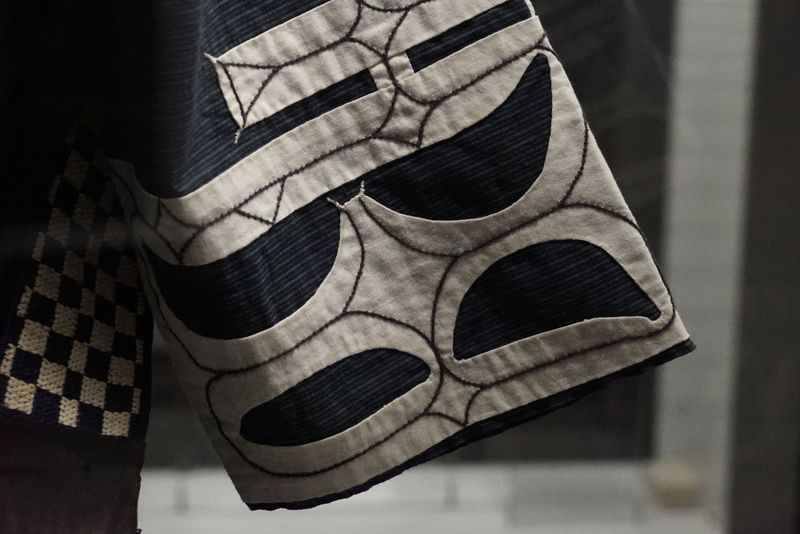
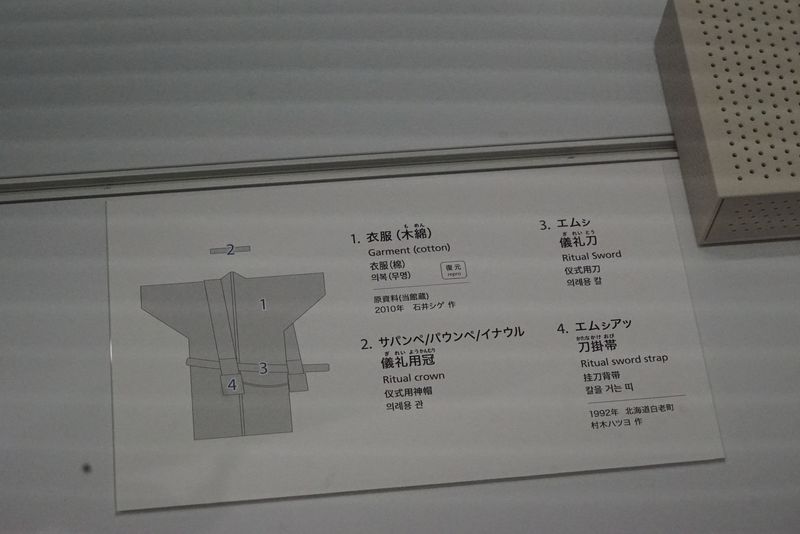

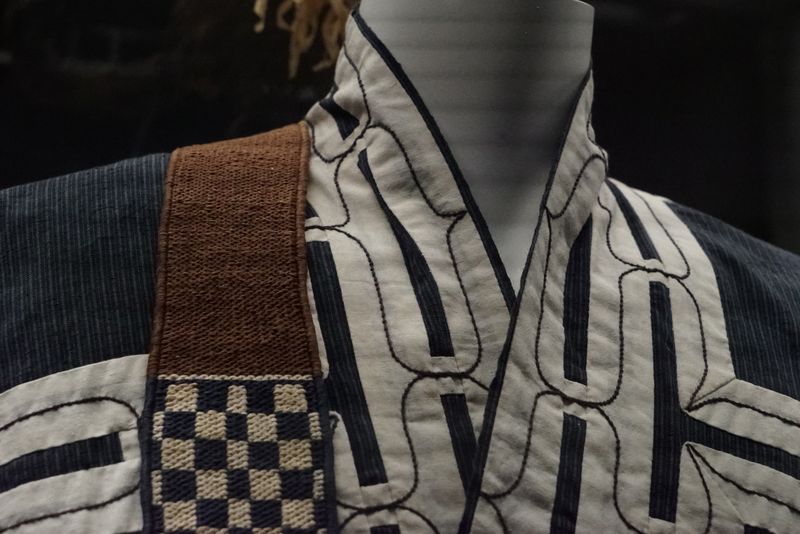

Winter Wear


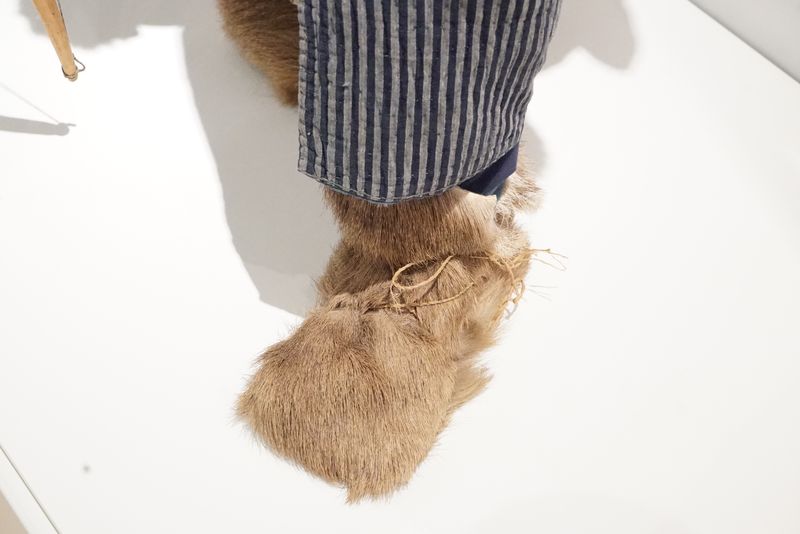
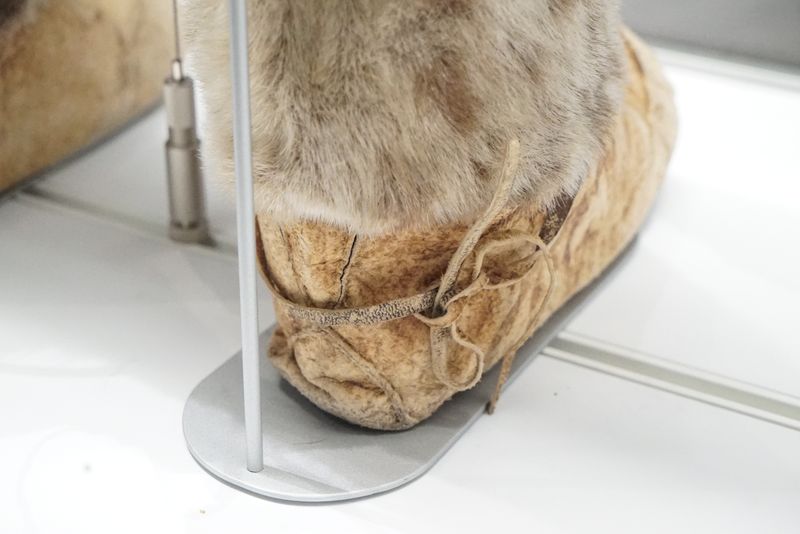
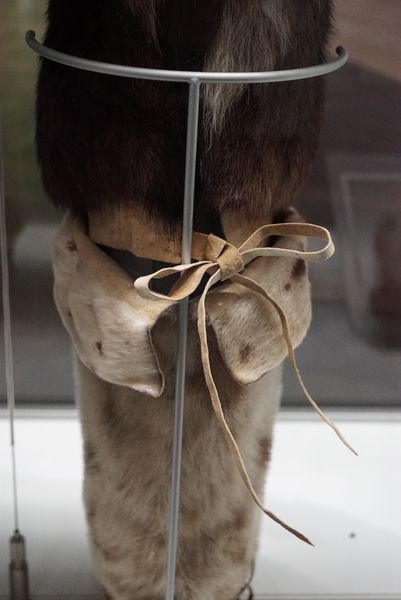



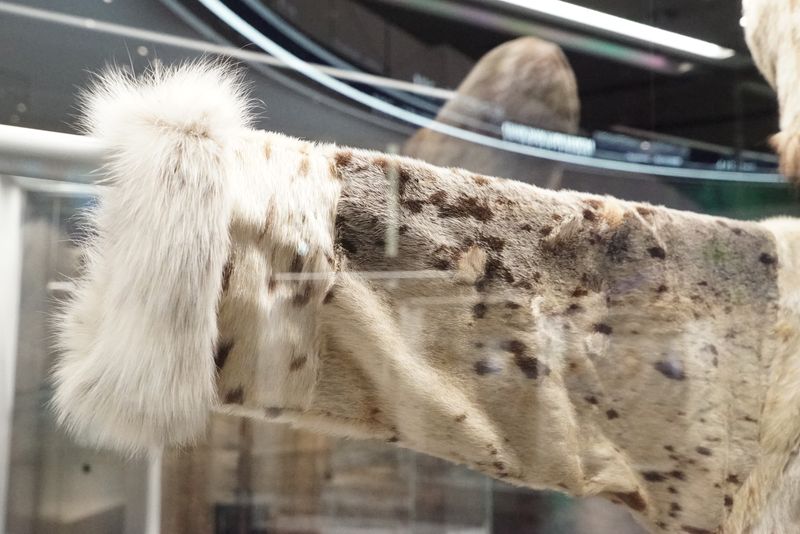
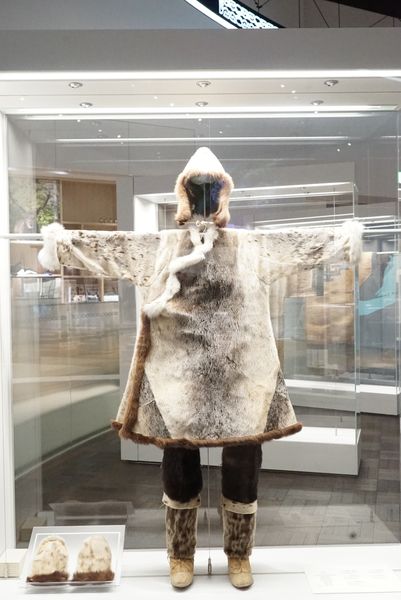


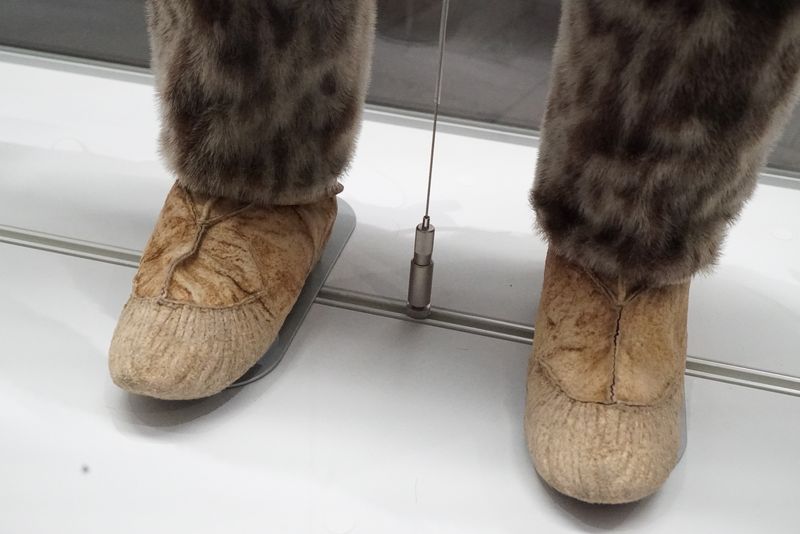


Woven Bags

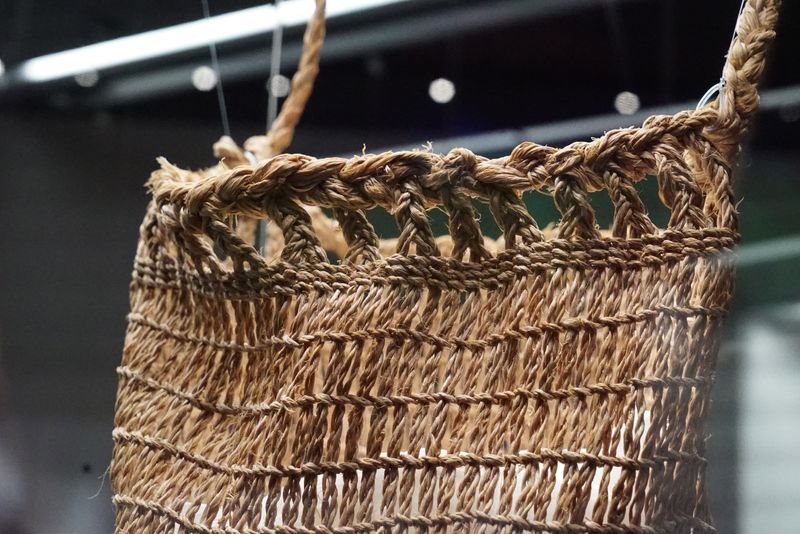
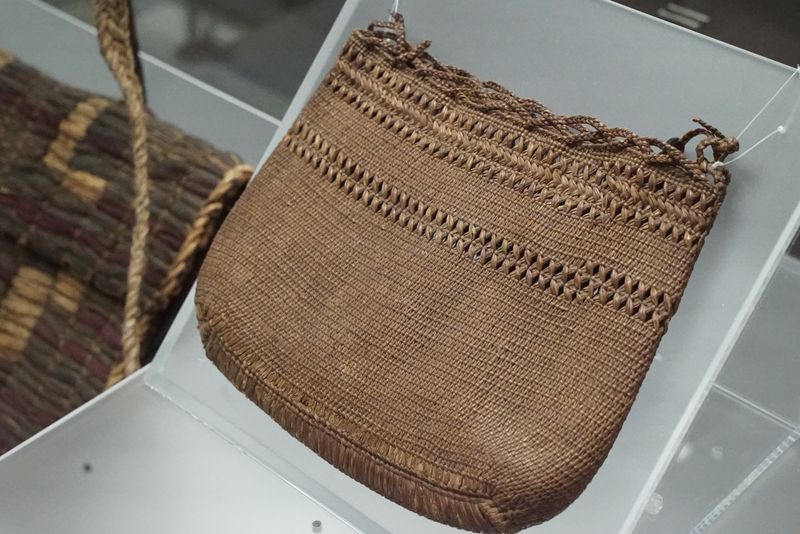
Cotton Wear
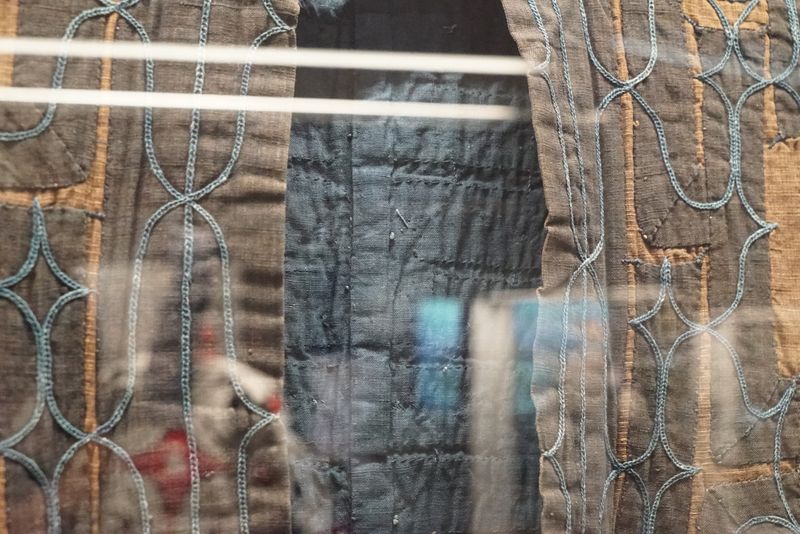

Enhancing a natural found object with craftsman artistry...
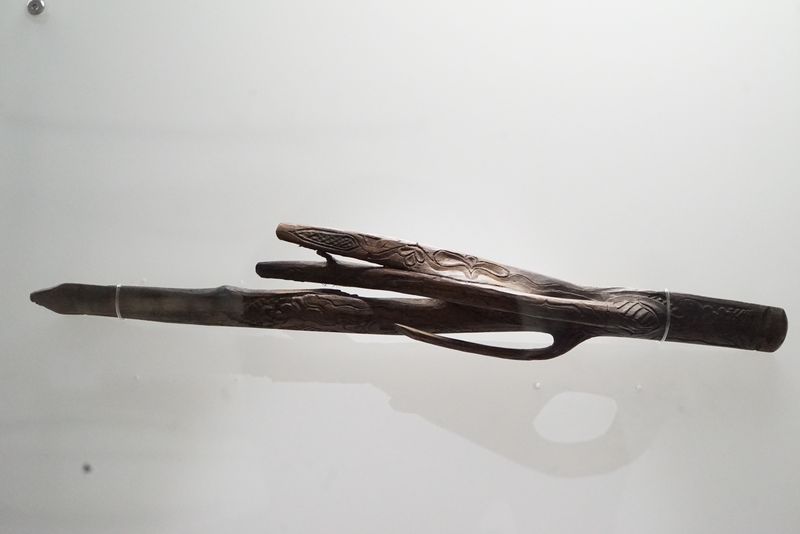
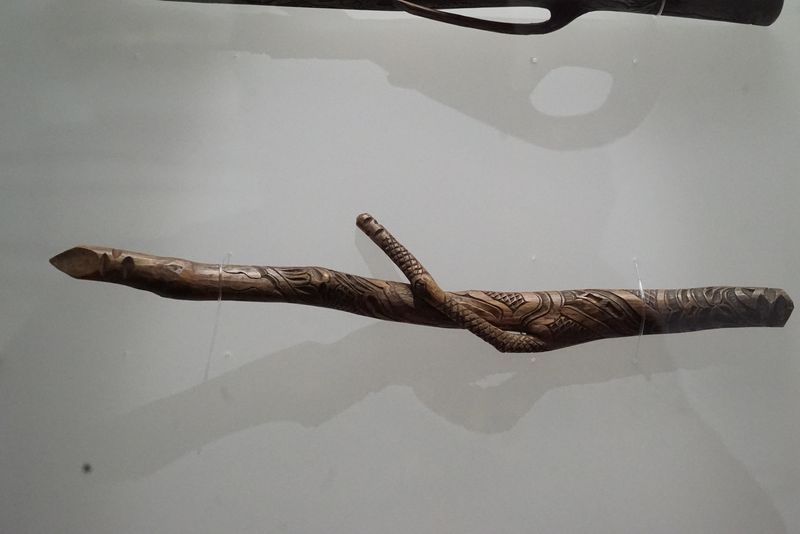 ...and ritualistic meaning
...and ritualistic meaning
